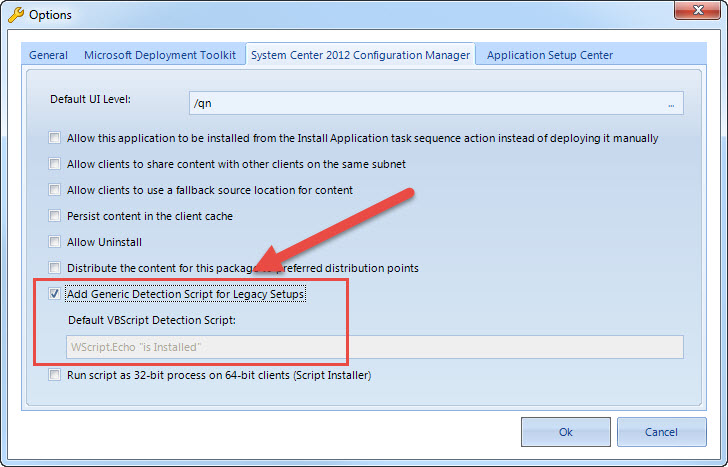The detection methods enable the administrator to verify if an application is already installed. Additionally, it can prevent an application installation if it overlaps with another application that is already installed. During the Application Deployment Evaluation, the System Center Configuration Manager client can detect the installation of an application using these methods even if they did not use the Software Center or the Application Catalog to install it.
-
In case of applications using a ‘Windows Installer (Native) – ‘MSI’ Deployment type, the MSI Product Code GUID is used for the detection method to detect whether an application has been installed. This GUID is added automatically as a detection rule when you use an MSI to create an app, both in Setup Commander as well as in the System Center Configuration Manager.
-
In case of applications using a ‘Script Installer (Native)’ – Script Deployment type, non-MSI setups also called legacy setups, there are different options to configure the detection method.
For legacy setups, the Setup Commander adds the following default VBscript in order to create the application initially:
WScript.Echo “is Installed”
The deployment of the app will fail however, because it will always return a string value which is not ‘null’.
Therefore, either you can update the detection method accordingly or you can opt to use a generic detection script instead. This is something which you can configure under Options > System Center 2012 Configuration Manager > Add Generic Detection Script for Legacy Setups.

This custom VBscript queries the HKLM..\Uninstall hive in the registry. Based on the Productname and Productversion information of the selected setup, with this VBscript we try to match what’s stored in the registry by the application setup.
Because most of the time the setup information is not accurate or doesn’t match what’s shown in the Uninstall registry hive or under Programs and Features, you might need to update this VBscript afterwards accordingly.
See How to create detection methods and How to simulate application deployments, on Microsoft Learn platform for more information.